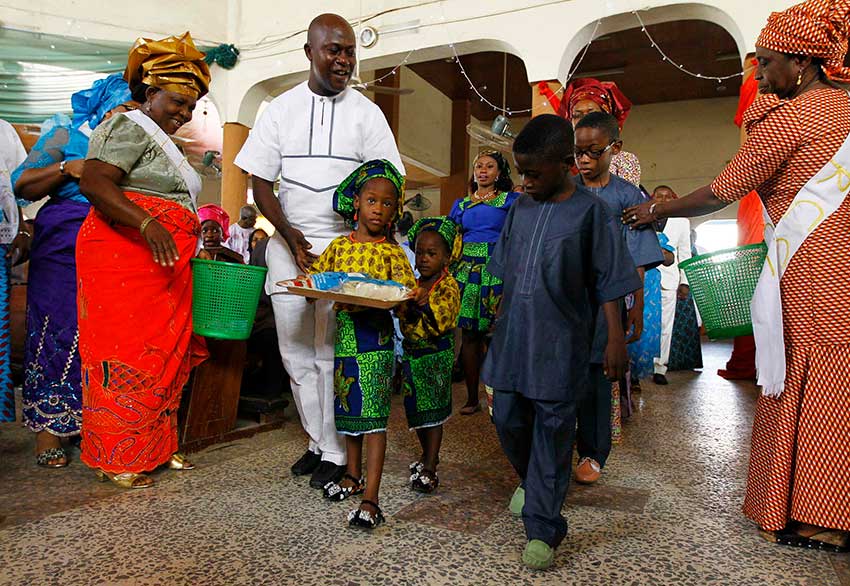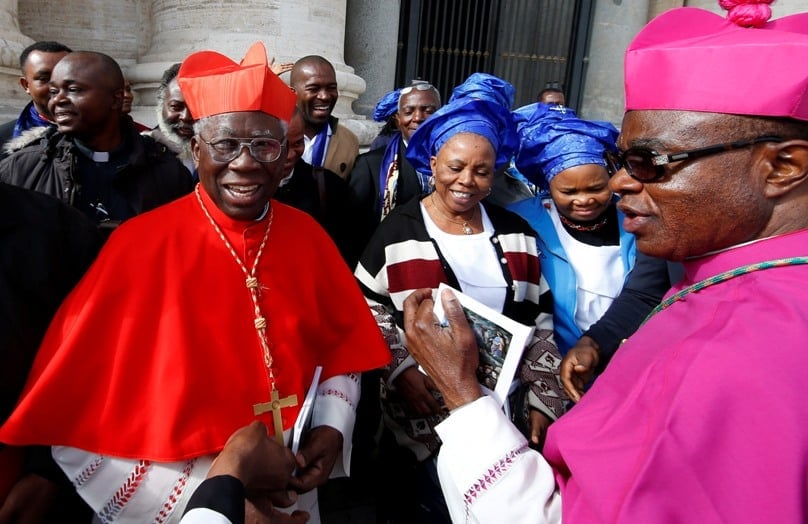
It’s always interesting to see what’s going on in the Church overseas. I’ve got two very uplifting stories for you, both involving the Church in Africa.
The Catholic Church in Italy has been culturally homogenous for centuries. But it’s now having to absorb African Catholic migrants, both legal and illegal – and these migrants aren’t always popular.
They mostly work in poorly-paid jobs and are regarded by many as second-class citizens.
In 2017, the US-based Pew Research Centre found that Italy was the most racist country in western Europe.
This was the same year that a local fascist group tried to hijack the Sunday Mass of a local Tuscan priest, Father Massimo Biancalani, because he sheltered African migrants and socialised with them.
But there are signs of positive change. The diocese of Reggio in southern Italy now trains and ordains priests for the Democratic Republic of the Congo (DRC).
The Pius XI Seminary in Reggio Calabria assists in the formation of priests from the DRC and Madagascar. The new priests serve for three years in Reggio before they go home, and the diocese has promised not to ‘mine’ African dioceses for priests.
“Reggio does not welcome foreign seminarians so that they can become priests of Reggio. Reggio welcomes them to help form them so they can return to their dioceses.”
In a 2020 interview, seminary rector Fr Salvatore Santaro described the seminarians as “a reciprocal gift, because their presence enriches very much both the formation in seminary and the local Church.”
“Reggio does not welcome foreign seminarians so that they can become priests of Reggio. Reggio welcomes them to help form them so they can return to their dioceses.”
Reggio has around 150 priests for its 150,000 or so practicing Catholics (one priest per thousand). But in the Diocese of Uvira in the Congo, it’s more like one priest for every 8,000 practicing Catholics.
The other good news story is from Archbishop Andrew Nkea of the Archdiocese of Bamenda in Cameroon, who was recently interviewed by international Catholic news source The Pillar.
It’s only a little Archdiocese – about the same size as the Diocese of Wollongong. However, it’s got twice the population and twice the number of Catholics.
Archbishop Andrew has got a lot going on – churches full to bursting of young people, but also a civil war that means priests and religious are sometimes kidnapped and held hostage.
So how do you build up your local Church and keep it going when you don’t have enough priests to go around, plus you’re occasionally being shot at?

Archbishop Andrew is doing it the same way that every persecuted and clergy-poor Catholic community has done it since the Acts of the Apostles. His people are formed into small households of the faith – little Christian communities of just a handful of families around a mission station.
The mission station is where a visiting priest will come and say Mass and administer the sacraments. But there’s no resident priest, and no parish.
“Everybody belongs to a small Christian community. And therefore, all the Christians in a particular neighborhood know each other,” said Archbishop Andrew.
“They have fellowship together. They have small Christian community masses. And it has built an incredible bond among our people.”
The small Christian community takes care of each other. They are each other’s friends, supporters, prayer warriors, and practical helpers.
They teach each other and their children and grandchildren
They visit and pray over each other’s sick and take care of the elderly and the weak. They grieve with the bereaved and bury their dead.
“Sometimes when they are sick, they get the whole community coming to visit them and pray with them, and they get more involved.”
Archbishop Andrew’s priests are on the road a lot – in fact, all the time. He has around one priest for every 3500 Catholics, so they’re busy.
One thing which will sound familiar to all of us is his difficulty in getting men involved in small Christian community activity. They’re fine about coming to Mass on Sundays, but the rest of it is relegated to ‘women and children’.
Archbishop Andrew is keen to reverse this imbalance and involve the whole family in the community.
One way that seems to be working is through men’s groups, and men becoming involved in Bible reading.
“And when the men start going, they start finding it very interesting. They don’t stop anymore. They start sharing together,” said the Archbishop.
“Sometimes when they are sick, they get the whole community coming to visit them and pray with them, and they get more involved. It’s slowly-slowly, but it’s taking root.”
It’s easy to forget that our problems in the Church are not new. Local churches all over the world face the same problems as the earliest Church did. And the best solutions are always, refreshingly, the same.
Related Articles:
